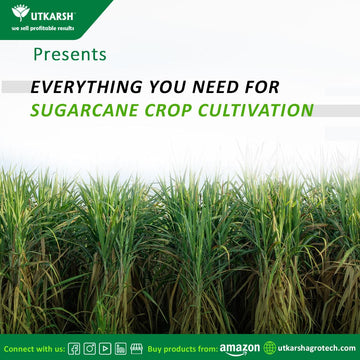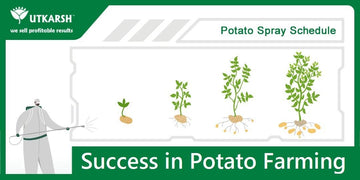
Rose Farming – An Introduction
The scientific name of the rose is “Rosa” and it has its place in the “Rosaceae” family. Rose flowers and Rose oil are exceptionally demanded in the nearby market as well as in the worldwide market. It finds itself as the main attraction in the global market.
Mostly, rose plants are six ft high from the land. The states of Maharashtra, Tamil Nadu, Karnataka, and West Bengal are the most rose to cultivate project states in India. The effective and successful rose cultivating process for the most part relies upon the varieties of rose flowers. In the most recent innovations, there are many rose planting techniques that are accessible however rose cultivation when practiced in a proper and effective manner gives the best results.
Basic Requirements for an effective Rose Farming
- Climate and soil
- Sowing
- Nutrient requirement
- Inter cultivation
- Water Management
- Pest and disease management
- Harvesting and Yield
Climate Requirements for Rose Farming
More sunlight, tacky and moderate temperature going from 15°C to 28°C are considered as ideal conditions for rose improvement in the tropical and subtropical climatic province of India.
The minimum light duration expected for good blossom yield is – 12 hours
The most significant climatic variables that assume a significant part in the rate of nuisances and sicknesses influencing the development and blooming is – Humidity
At a temperature underneath 15°C, roses might be developed, yet the gap between flushes becomes longer. At higher temperatures, say above 30°C, roses can be developed given high moistness is kept up with and dissipation is dialed back.
Soil Conditions for Rose Farming
Roses favor very much depleted soil that is wealthy in natural matter and oxygen. Ranch Yard Manure can be added to make the dirt wealthy in fertilizer.
Numerous cultivators lean toward natural matter as high as 30% in the main 30 cm of the developing beds.
Roses can be filled well in the soil of PH scope of 6 to 6.5. Soil loosening on beds is expected following 4 to 6 months or so, quite possibly the soil becomes hard and it must be released for a productive water system so the blossom yield is high.
Land and Bed Preparation for Sowing
To carry soil to a fine tilth, furrowing and digging activities are done. Getting the bed ready for development, 4 to 6 months prior to planting.

While planning a bed for rose development, add 2 tons of all-around deteriorated cow fertilizer and 2 kg of Super Phosphate in soil. Then, at that point, do evening-out activity for uniform bed development. Developing rose on the bed is more productive than filling separately in pit.
- 1-1.6 m wide,
- 30-40 m long and
- 15-20 cm/ 30-40 cm height
- 5-0.75 m between two beds
Sanitize media with steam at 70-100oC for 30 minutes or use methyl Bromide @ 25-30 g/M2/10 ml/cuft for 24-48 hr or Formalin @ 7.5-10.0 l/100 M2 or Utkarsh Silver H2O2 @ 2 liters/section of land or Basamid (Dazomet) @ 30-40 g/M2
Spacing and Planting for Rose Farming
0.75 m from one pit to another and 0.75 m from one column to another in low thickness development accordingly obliging around 7,000 plants for every section of land with plant thickness 1.73 plants/m2.
In the event of greenhouse culture, high thickness establishing will oblige around 28,000 plants for each section of land having plant thickness 7 plants/m2. Standard roses are planted at a dividing of 90-100 cm. Plantlets are planted following seven days of topping off the pits.
Key Points to be taken care of while Planting:
- 6–18-month-old budded plants may be planted during May-June.
- Planting may be in a 2-row system.
- Per compartment of 6.40 metre, 6 rows of plants can be planned.
- The distance between the plants in one row varies around 15-20 cm.
- This results in 7 to 8 plants per meter square.
- Removing all the broken and bruised leaves while planting is important in rose farming.


The best season to cultivate the Rose is between September to October. The rose plant needs managing/slicing every once in a while. It requires Organic matter which incorporates Farm Yard Manure (FMY) and a few composts at the hour of planting.
Manuring and Fertilizers
The best opportunity to add natural compost is at the hour of pruning. FYM, leaf form, and oil cakes are great wellsprings of nitrogen. It is smarter to apply composts in a blend, for example, ‘roxe blend’. Rose Mix can be ready as:
Neem cake – 5 kg
Bonemeal – 5 kg
Ammophos – 2 kg
Sulphate of Ammonia – 1 kg
Superphosphate – 2 kg
Sulphate of Potash – 1kg
100 g of this blend can be utilized per plant. The chelated mixtures of iron, magnesium and manganese are accessible in the market which is useful in drawing out the full shade of blossoms.
As a rule, each rose plant expects around 20-30 g urea, 30-50 g single superphosphate, 20-30 g sulfate of potash and oil cakes ½ kg to 1 kg in 2-3 split portions is suggested each year.
Irrigation and Water Management
Irrigation is done twice a week from October to March, Thrice a week from April to June. No water system is expected during the stormy season.
Water systems should not bring about waterlogging.
3 a month in the wake of establishing a dribble water system might be utilized for uniform watering. Each plant has to be watered at one liter/plant/day.
A drip irrigation system is recommended; as each plant receives an equal amount of water. By providing the water straightforwardly on the preparing blend, the actual plant doesn’t become wet (so forestalling sicknesses).


Harvesting
Harvesting is finished with a sharp item at the phase of tight bud when the shading is completely settled and the petals have not yet begun unfurling. Harvesting the blossom buds is done at the tight bud stage for a longer distance. At reap it regularly was practiced to scale back to the initial 5-leaf stage.
Subsequently, it is prescribed for scaling back to simply over the first cutting.
Yield starts 4-5 months after planting. Flower yield goes from 100-150 stems, 200-225, and 250-350 stems for every meter square in huge half breed tea, medium sorts, and little and splashes, individually.
Customized UTKARSH Integrated Fertilizer Management Chart for effective cultivation and efficient protection against Pests and Diseases
Fertilizer & Spray Program for 1 acre/per plant
Rose Fertigation Schedule
| Stage of crop |
Fertilizer application
method |
Time for use | Name of products | Quantity in kg/liter |
| Before plantation | Soil | Basal dose | FYM | 40 % |
| application | Soil | 40% | ||
| In pit of size | Leaf mould | 10% | ||
| 45 cm x 45 | Oil cake | 10% | ||
| cm x 30 cm | and bone | |||
| per plant | meal | |||
| Urea | 25 gm/plant | |||
| DAP | 30 gm/plant | |||
| SOP – | 40 gm/plant | |||
| 0.0.50 | ||||
| Combi Soil | 10 gm | |||
| Root development | Drenching | After 7 days | Microbes | 3 kg/acre |
| In 200 litre | of plantation | Vamoz L | 1.5 | |
| water | litre/acre | |||
| microbes 1 | ||||
| kg + Vamoz | ||||
| L 0.5 litre – | ||||
| per plant
100 ml |
||||
| Main Stem formation | Drenching In 200 litre water – Horse power 5 litre+ stress free 500 ml
+ Roots multiplier – 1 litre – Per plant 100 ml |
After 15-20 days of plantation |
Horse
power |
15 litre/acre |
| Stress Free | 1.5
litre/acre |
|||
| Roots Multiplier | 3 litre/acre | |||
| Main stem elongation | spray | 30-45 days after plantation | Prime all | 2 gm/litre |
| Stress Free | 1 ml/litre | |||
| Combi – 2 | 1 gm/litre | |||
| Bud Development and plant growth and health | Soil application | Every 3 months after pruning | Compost | 6-10
kg/plant |
| Urea | 15 gm/plant | |||
| DAP | 20 gm/plant | |||
|
SOP –
0.0.50 |
25 gm/plant | |||
| Bud Development and plant growth and health | Drenching with water in roots | Every 3 months after pruning |
Horse
power |
2 ml/plant |
| Stress Free | 0.25
ml/plant |
|||
|
Roots
Multiplier |
0.5 ml/plant | |||
| Bud development | Spray | 10 days after pruning | Bhim Plus | 0.5 ml/litre |
|
Horse
power |
10 ml/litre | |||
| F-Plus | 1 ml/litre | |||
| At Full Bloom – for quality and size | Spray | 13:00:45 | 7 gm/litre | |
| F-Enhancer | 1 gm/litre | |||
| Bhim Plus | 0.5 ml/litre | |||
| Insects observed | Spray | Aphid |
Bio Clean
Sweep |
2 ml/liter |
| Spray | Whitefly |
Bio Clean
Sweep |
2 ml/liter | |
| Spray | Mite |
Bio Clean
Sweep |
2 ml/liter | |
| Spray | Jassids |
Bio Clean
Sweep |
2 ml/liter | |
| Spray | Leaf Minor | Neemoz CP | 4 ml/litre | |
| Spray | Mealy Bugs |
Bio Clean
Sweep |
4 ml/liter | |
| Spray | Thrips |
Bio Clean
Sweep |
2 ml/liter | |
| Spray | Scale insect | Neemoz CP | 4 ml/liter | |
| Spray | Caterpillar
and sawfly |
Bio Clean
Sweep |
2 ml/liter | |
| Drenching | White
ant/Termites |
TermiNIL | 5 ml/litre | |
| Drenching | Nematodes | NematoNIL | 2 ml/litre | |
| Diseases observed | Spray | Black Spot | FungFree | 2 ml/liter |
| Spray | Powdery
mildew |
FungFree | 2 ml/liter | |
| Drenching | Stem Canker
& Dieback |
FungFree | 2 ml/liter | |
| Spray | Rust | FungFree | 2 ml/liter | |
| Spray | Botrytis Blight | FungFree | 2 ml/liter | |
| Drenching | Crown Gall | FungFree | 2 ml/liter | |
| Spray | Rose Rosette
Disease |
FungFree | 2 ml/liter | |
| Spray | Mosaic Virus |
Viroz,
virimune |
3 ml/liter |
To know more about Rose farming, Watch our Webinar Recording of Profitable Rose Farming:
Utkarsh Agrochem
Utkarsh Agrochem aims to help and assist you with all your requirements and doubts regarding Rose Farming or any type of farming needs.
Do visit us for any queries, guidance or requirements, for starting or setting up your plantation. Utkarsh Agrochem is your one-stop destination for all your farming needs.
Utkarsh has launched 1-Acre Kits of Banana, Papaya, Gourds, Ginger, Okra & many more
Simply order the number of 1-Acre-Kits as per the size of your farm and get the entire range of requirements covered in it.
Simply select the kit, that’s it. => Lesser Cost & Higher Profitability.
To shop a Farming kit Click on this: https://utkarshagro.com/product-category/kits/
You can easily get our products on amazon and on our website.
All the products mentioned in this blog can be found on Amazon as well as the website of Utkarsh. Also, the method of application and the required dose can be easily found on our Website – Utkarshagro.com/shop.
उत्कर्ष के संग आपकी हर फसल होगी सफल।
Available on UtkarshAgro.com | Amazon | Flipkart | AgriBegri | Bighaat | Moglix | Agrosiaa | Toolsvila | Agri junction | Krishisuvidha | Ecotika | Shopee | Bazzu.in
Visit Website: https://utkarshagro.com/
𝐂𝐎𝐃 𝐚𝐧𝐝 𝐄𝐌𝐈 𝐨𝐩𝐭𝐢𝐨𝐧𝐬 𝐚𝐫𝐞 𝐧𝐨𝐰 𝐚𝐯𝐚𝐢𝐥𝐚𝐛𝐥𝐞.
May you have the best yield ever! Feel free to contact Utkarsh for any doubts and advice.
If you have any further queries, feel free to reach out to us on 919824133044, +919924864422, +919824300544
Landline: 02621-255972
Visit our website: https://utkarshagro.com/
Email ID: rd@utkarshagro.com
Stay connected with us to learn more tips and tricks. All you have to do is follow us here:
Chat: wa.me/918866543678
Facebook: https://www.facebook.com/utkarshagrochem/
Instagram: https://www.instagram.com/utkarshagrochem/
Twitter: https://twitter.com/UAgrochem
LinkedIn: https://www.linkedin.com/company/utkarsh-agrochem-pvt-ltd/
Pinterest: https://in.pinterest.com/utkarshagrochemsocial/
Written by: Pratik Sinha Affiliate Writer with Monkey Ads





